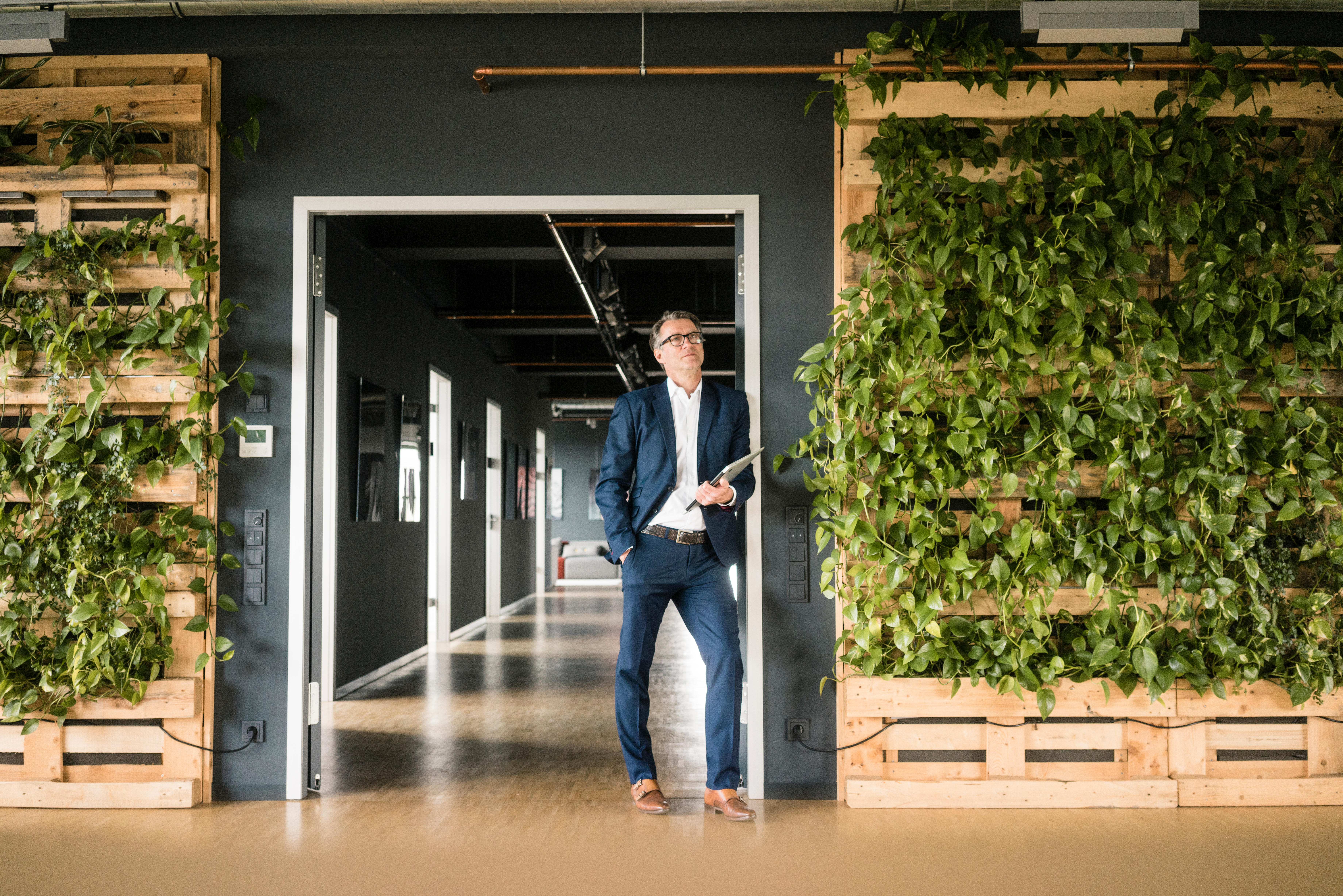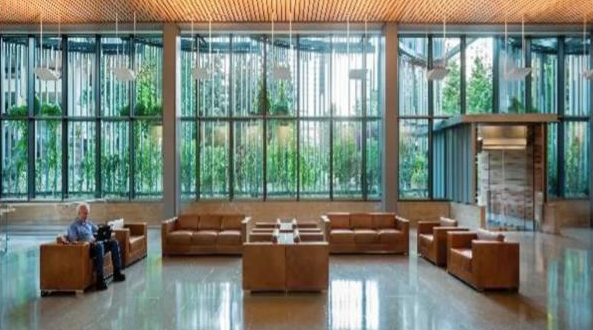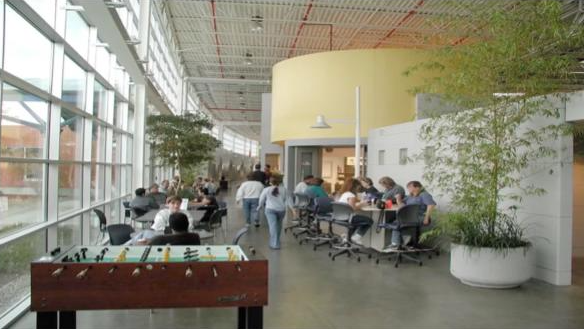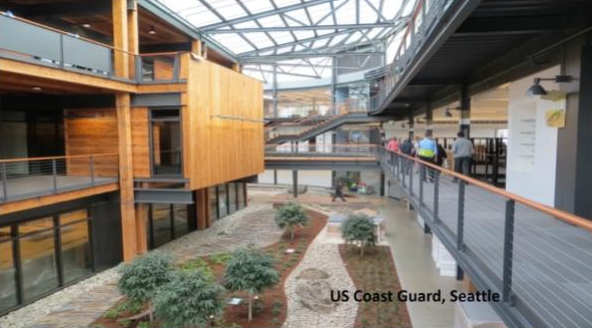Editor's Note: As part of our coverage on the new world of work, we'll be running recaps of virtual events from the NeoCon commercial design event, which took place from June 10-12, 2023. See our previous coverage of Salesforce’s deep-dive into the flexible design philosophy behind the company’s new tower in Chicago, IL. Also see our coverage of how data impacts the design of floor plans and furniture when it comes to encouraging employees to return to the office.
In the NeoCon virtual session Distributed Cognition and the Future of Work, Judith Heerwagen, Environmental Psychologist at Office of Federal High-Performance Green Buildings, US General Services Administration and Sally Augustin, Principal at Design With Science, spoke about how the concept of distributed cognition can be used to inform workplace design and encourage employees’ return to the office.
Cognition is Not All in Your Head
The session kicked off with Heerwagen providing some human evolutionary context for the concept of distributed cognition. “The mind evolved to save neural energy by distributing cognition between the environment and people,”
Heerwagen said. “Our thinking and our mind is not solely in the brain – they are distributed between the brain and the external environment.”
To further clarify what distributed cognition means, Augustin provided the example of thinking up an advertising jingle while looking at a painting. “When I look at that painting again at a future time, my idea will come to mind again. That’s one way we use the world around us to help us remember things,” she said.
Another key attribute of distributed cognition is social. “Not every one of us has to know everything. I can know about A and B, Judy knows about C and D,” Augustin said. “When we get together, we know about A, B, C, and D all together. That's socially distributed cognition.”
After tracing the possible human evolutionary roots of distributed cognition, Heerwagen applied the concept of biophilia (also discussed during this Salesforce Neocon session) – which basically contends that “humans possess an innate tendency to seek connections with nature and other forms of life” – to today’s urban environments and the “return to office” push.
A Natural Absence
Heerwagen showed the following picture of how a standard office building looks from the outside – lots of desks and open spaces – as a blanket illustration for how many worked pre-pandemic. “It’s hard to find anything natural here – maybe a few plants. It’s a built environment with very little connection to nature,” she said.
A biophilic design means understanding the elements of nature that have the beneficial qualities of helping people relax and enjoy something as they interact and engage with others. According to Heerwagen, the elements that show up strongest in any work on biophilia are water, vegetation, and sunlight.
Bring in Water, Plants and Light
To illustrate this concept, Heerwagen showed the following picture of a federal building in Portland, Oregon. “It has this beautiful lobby area with places where people can do their work. It has the variation in the colors and has the variation in the materials,” she said. “The ceiling is very interesting because it's wooden and the light shows through it.”
Another example is shown in the following graphic – a hallway in an office. “It's the kind of space that draws you in because you can't see it all at once. We want to be able to understand what's around that corner. And that would be true of our ancestors, as well,” Heerwagen said.
Next, she showed the Coast Guard building in Seattle, Washington. She drew attention to the plants and the gravel that looks like a path. “It was intended to be a little waterway, but it didn't pass building codes. On the left is recycled wood from the building they took down to build this one.” She also noted that people in the building can see outside from every space and that the clear ceiling lets in the daylight.
Heerwagen said that although there is a great deal of research on the health and well-being benefits of biophilic design – reduced psychological and physiological stress – the “why” behind it isn’t clear yet. Regardless, people do tend to have much more positive emotional states in environments like those pictured than when they are in spaces that have no natural elements, particularly when there are no windows.
“All of those natural elements and the aspects of nature are important, but they have been boiled down too much to plants,” Heerwagen said. “There’s more to it – access to daylight, to places where you can pull away. You have to recognize the environment as a whole and the way it can help people. Plants are wonderful, but they're not going to solve the problem of getting people back to work.”
The Fruit of Broken Promises
Augustin agreed and pointed to more fundamental problems underlying employee resistance to returning to the office. “It's difficult to design workplaces because we're seeing the end of the social contract between employers and employees. For a long time, there were obligations on both sides: If the employee did this, the employer would do that, etc. But the pandemic seems to have pretty much destroyed the last remnants of the social contract between employers and employees everywhere.”
She continued, citing high levels of burnout among employees, and the research that indicates how the physical environment can make burnout less likely by supporting employees' workloads. Addressing burnout might include tactics such as giving people opportunities to mentally refresh, giving them some control over the world in which they work, creating positive messages in the environment and also by creating spaces that help build social bonds.
Despite burnout and the sundered employer-employee social contract, “People still want to do their jobs well. They want some control over their existence, and they want to be able to socialize with others when they choose to,” Augustin said.
She says the three core motivations people had – to excel at work, to socialize when they choose, and to assert control over their lives – have always guided workplace design, and now can be used to develop workplaces that incorporate distributed cognition.
Reintroduce Distributed Social Cognition
For example, having an assigned seat where people sit until they complete a project can help trigger productivity– which hearkens back to Augustin's point about associating a jingle with an often-seen painting. “But those assigned spots are starting to become as scarce as hen's teeth,” she said.
If given the option, people tend to return to the same seat over and over. And if there’s a team room, people tend to sit in the same seat in that room which means they’ll have the same, familiar view and place within the space. Heerwagen likened this to our ancestors sitting communally beside fires, telling stories and looking at the sky.
“If we remove people's individual seats, it's really important that we establish territories, if you will, for the groups to which they belong,” Augustin said. This is important because it provides those individuals with a familiar spot and view of their environment, which can aid memory, creativity and belonging. “We can't perhaps assign a single seat to a single individual every day, but maybe we can work out something so that, say, three people who aren't in the office at the same time are all assigned to the same seat.”
Other solutions might include reserving a room over the life of a project and then allowing team members to reserve seats within that room. If none of that is possible, then the organization forfeits what Augustin referred to earlier as the socially distributed cognition.
Augustin also emphasized that people communicate in many ways – words, inflection, gestures and facial expressions, etc. Usually, those things come through in a video conference but there are some things that do not (perhaps only for now) – like eye contact, body orientation, how far away people stand (or sit) from each other. All of those other communication methods send different messages. And, in video meetings, people can’t see how people are responding to one another and you can’t have verbal sidebar conversations.
Of course, Augustin’s observations reference meeting equity, which has been a focus of video and collaboration technology vendors for a while. New AI-based technologies are focused around providing views of the speaker or lending a cinematic flair to the video meeting experience.
Augustin noted that there are jobs/roles where people don't need to interact with teammates either at all, or only very rarely. In those cases, it may be possible for them to continue spending most of their time working from home. Note that since the pandemic (and before) some people were hired as “remote only” and they may live in areas that are nowhere near a company’s main offices. So, the reality of those situations is somewhat different than what Augustin is describing and needs to be acknowledged.
“If you are in a job, where you need to gather with other people and have serious conversations – maybe about strategic or thorny issues – you need to integrate your socially distributed cognition,” she said, because otherwise “you'll find that you just don't perform to your full potential either as individuals or groups unless you come together in the same workplace And since the kinds of conversations I'm talking about can't be entirely predicted, that means you need to be in the workplace.”
Write A New Social Contract Between Employer and Employee
With that said, Augustin circled back to one of her original points which involved the breakdown in the social contract between employee and employer. She said that for the “return to office” to happen it is crucial for the contract to be reconstituted.
“If you as an employee really tried to do your job, your employer would maintain you as an employee. You would get a pension, you’d have health care, etc., which is no longer the case in many situations. People who were really trying and doing their very best, their jobs got outsourced somewhere or gig work took over their role, and therefore, the bonds between the remaining employees and the employer disintegrated,” Augustin said. “It was clear that nobody was going to make any effort for anybody else.”
She continued. “Organizations have to take steps to indicate again that they value their employees and recognize the contributions that their employees make to the success of the organization. That's going to support the return to work. I don’t think there's a ‘magic amenity’ that the employer can offer.”
Augustin further suggested that rewriting the contract will be an iterative, communicative process between employers and their employees. And that will lead to the employees as a whole being more interested in contributing to the success of the employer by coming back into the workplace where everyone can perform to their full potential as individuals and groups. Just as the social contract broke down over time, so too will it take time for it to be rebuilt – if both sides are willing to do the work.
“We have to remember that the physical environment certainly has an important effect on how we think and behave, but so do things like how we earn a bonus at work, get promoted, or what the organizational culture is,” Augustin said. “So, nothing, no aspect of the physical environment ever works alone.”
Heerwagen agreed saying, “I think that's one of the most worrisome things about the situation now. People seem to feel comfortable sitting at home by themselves. And I don't think it's good as a species to continue this way because we evolved as a social species.”









